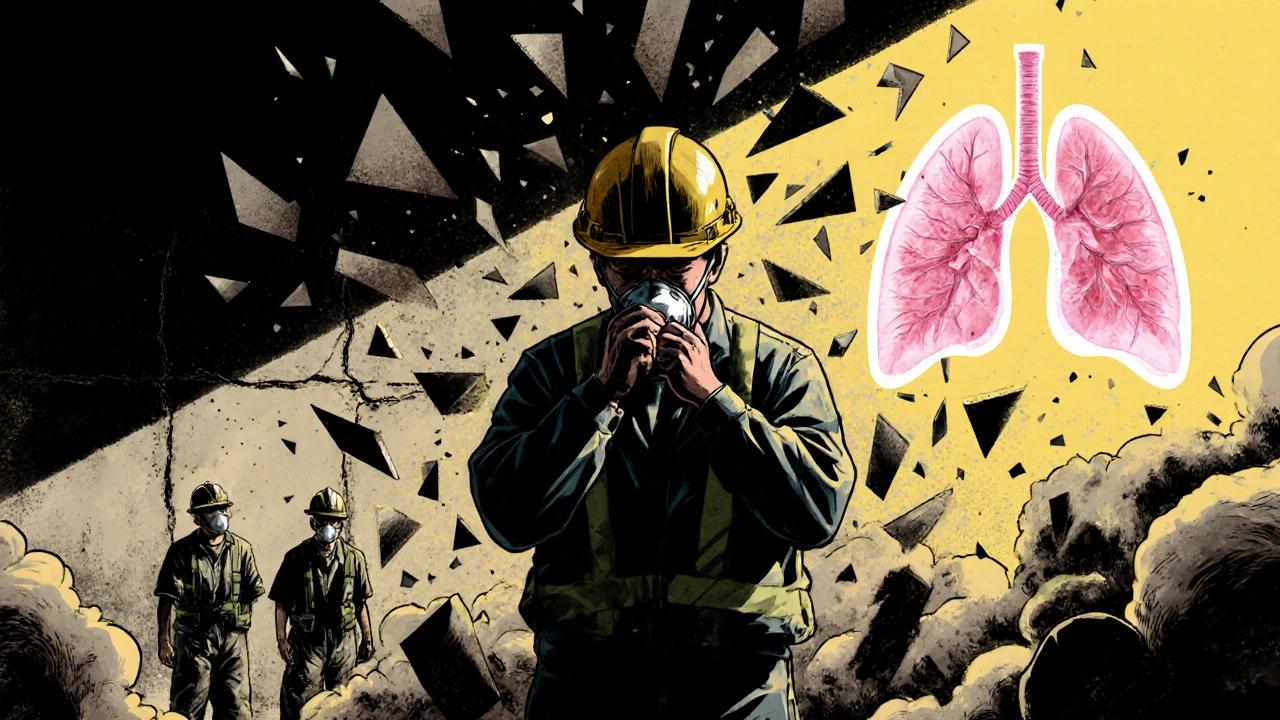Occupational Lung Disease: Causes, Risks, and What You Can Do
When you breathe in harmful dust, fumes, or chemicals over time at work, your lungs can get damaged—this is occupational lung disease, a group of lung conditions caused by long-term exposure to workplace hazards. Also known as work-related lung disease, it doesn’t show up overnight, but the damage builds silently until breathing becomes hard, coughing won’t quit, or oxygen levels drop. It’s not just smokers or older adults—this hits construction workers, miners, factory staff, and even nail salon technicians who breathe in fine particles daily.
Some of the most common types include asbestos exposure, a leading cause of mesothelioma and asbestosis, often from old buildings or shipyards, and silicosis, a deadly scarring disease from inhaling crystalline silica found in sand, stone, and concrete. Then there’s coal workers’ pneumoconiosis, also called black lung, which still affects miners despite decades of safety rules. These aren’t rare outliers—they’re documented, preventable conditions that show up in medical records because someone was exposed for years without proper protection.
What makes these diseases so dangerous is how slow they are to show up. You might work for 20 years feeling fine, then suddenly struggle to climb stairs. By then, the lung tissue is already scarred and can’t heal. That’s why early detection and workplace monitoring matter more than ever. If you’re around dust, fumes, or chemicals, your employer should provide respirators, ventilation, or air quality tests—but too often, they don’t. And if you’re already feeling off, waiting won’t help. Getting a chest X-ray or lung function test can catch changes before it’s too late.
There’s no cure for most of these conditions, but stopping exposure can stop the damage. Wearing the right mask, washing up after shifts, and avoiding smoking make a real difference. And if you’ve been in high-risk jobs, knowing your history helps doctors spot problems faster. This collection of articles covers everything from how these diseases develop to how medications and treatments help manage symptoms—some even look at how legal protections or workplace policies can reduce future cases. You’ll find real stories, science-backed advice, and practical steps you can take today, whether you’re a worker, caregiver, or just concerned about your health.

